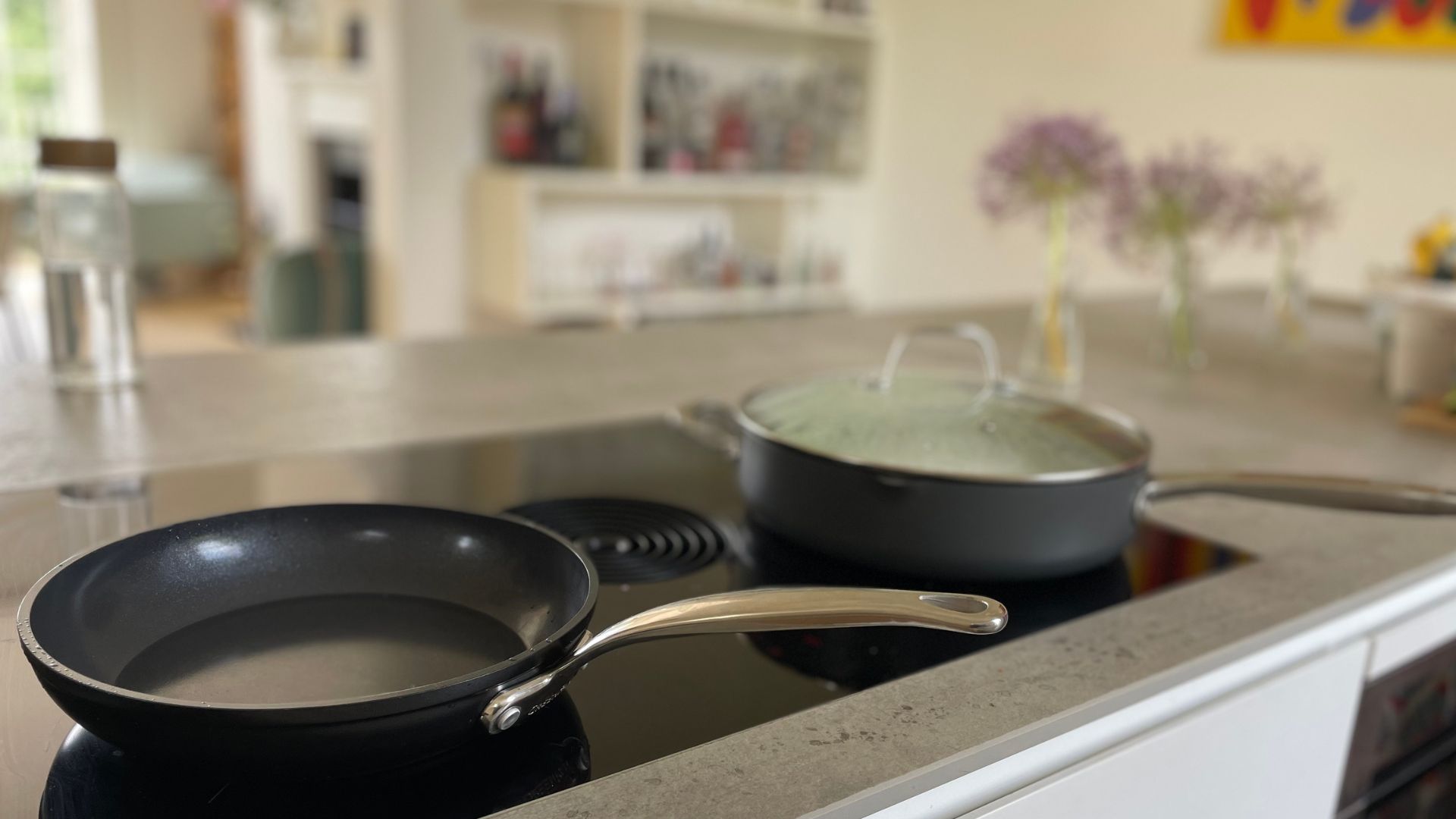
Crafted from recycled aluminium, stainless steel, and ceramic, the Zyliss Ultimate Pro pans promise to deliver across the board for style, sustainability, and longevity. If you're interested in quality without compromise, you're in the perfect place.
Zyliss pans have celebrity status amongst our food team at woman&home. They’ve long featured in our buying guide for the best induction pans on the market and, with their ever-expanding Ultimate Pro collection, I thought it was time to take them for a spin.
I tested the frying pan as well as the sauté pan (there is also a grill in the Ultimate Pro collection) to find out whether they can still deliver on unparalleled quality and consistency in the heat of the test kitchen. Here’s how it went.
Specifications
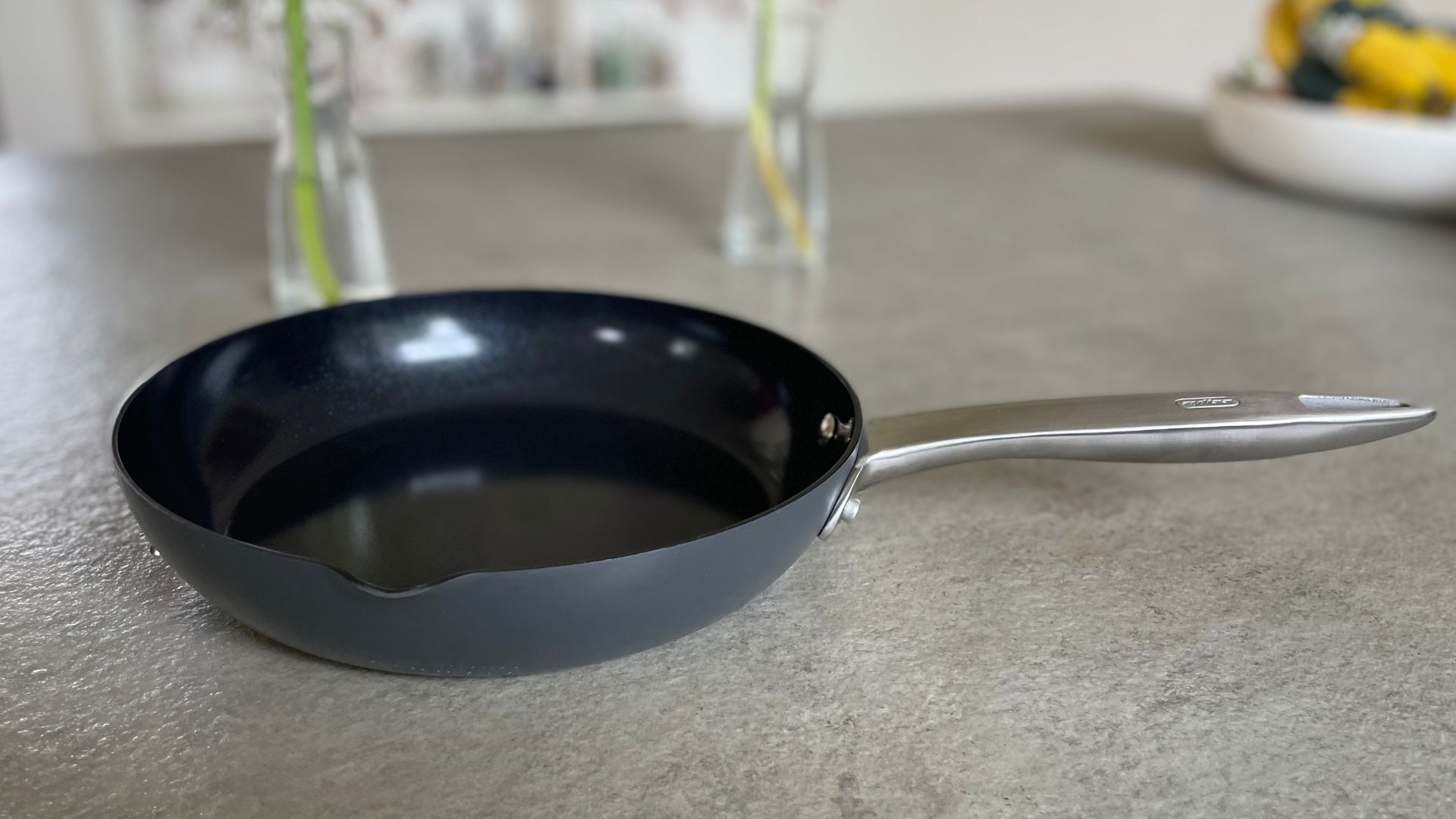
RRP |
£40-60 |
Sizes available |
Fry pan, sauté pan, grill pan |
Non-stick |
Yes |
Composition |
Recycled aluminium body with stainless steel base |
Dishwasher safe? |
Yes |
Hob compatability |
All |
Oven safe? |
Yes, up to 220°C |
Unboxing
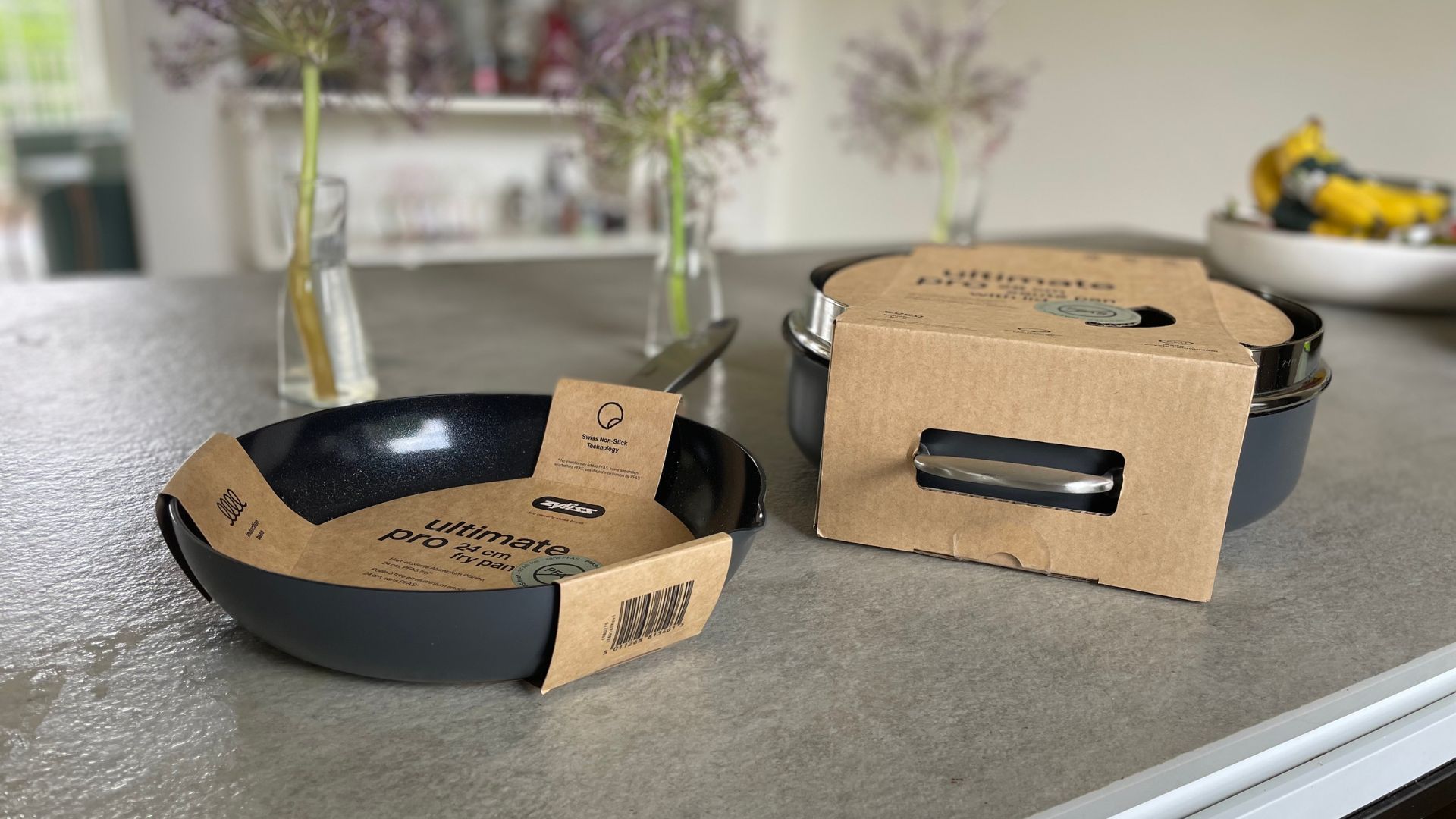
Zyliss keeps packaging for the Ultimate Pro collection really simple. All the pans come with a cardboard wrap around them, detailing the components, cleaning advice, and any other important information that it would help to know. Once you’ve read through it, you can pop the cardboard in the recycling, guilt-free.
I’d recommend giving the pans a good clean, so that no dust or dirt that may have settled in transit gets baked into your cheffing creations. Aside from that, you can start cooking straight away.
Who would it suit?

The Zyliss Ultimate Pro pans are second to none. Given their reasonable price tag and classic design, they have a pretty broad appeal, but there are some specifics that really deserve a shout-out.
First, the non-stick is ceramic, which has benefits in lots of ways. It means you can use metal utensils when you cook without needing to worry about scratching off any non-stick (a godsend for me) and I have always found that ceramic is really naturally robust too. The second benefit of a ceramic non-stick is that it is often called ‘non-toxic’. Unlike other materials used, if this is damaged or scratched, you don’t have the same concerns as has been raised for materials such as Teflon. So, that gives these pans a big tick for health-conscious chefs as well as ones who want non-stick that can withstand their stainless steel.
The non-stick element is also great. I didn’t burn anything — even though I tried hard — and found that I didn’t need to use oil to keep food moving around the pans. In some cases, I threw oil in to get the food crispy, but that’s only for a texture and flavour benefit, rather than for any practical motive.
Another feature that you might not spot, but should definitely note, is that the Zyliss pans are really nice to handle, especially if you struggle with weight through your wrists. Given their quality, I expected them to be heavy and straining, but they're a manageable weight. The sauté pan has the potential to get heavy, but the handle on the opposite side (which doesn't get hot) makes this really easy to carry around.
What is it like to use?

I took both pans through a pretty similar series of test, because I have a set selection that lets me compare different brands’ pans to each other. This started with really basic frying and moved through to slower dimmers on the hob. My overall impression of these pans is that they’re really easy to use, very responsive to changes in heat, and great for when you need really quick, but still even results. I've already mentioned how nicely the handles distribute weight, making them easier to hold, but I want to emphasise it again here. Alongside pouring pouts on the edge of each pan and drainage holes in the sauté pan, the Zyliss Ultimate Pro set has clearly been designed by people who think a lot about what these pans are like to cook with.
The first test that both the pans went through was sitting on the hob on full heat. After twenty seconds, I flick water onto the base of the pan to check the temperature. On my very first test, both pans were already sizzling hot. The water beads danced across the pan instantly: proof that they’re very quick to get hot.
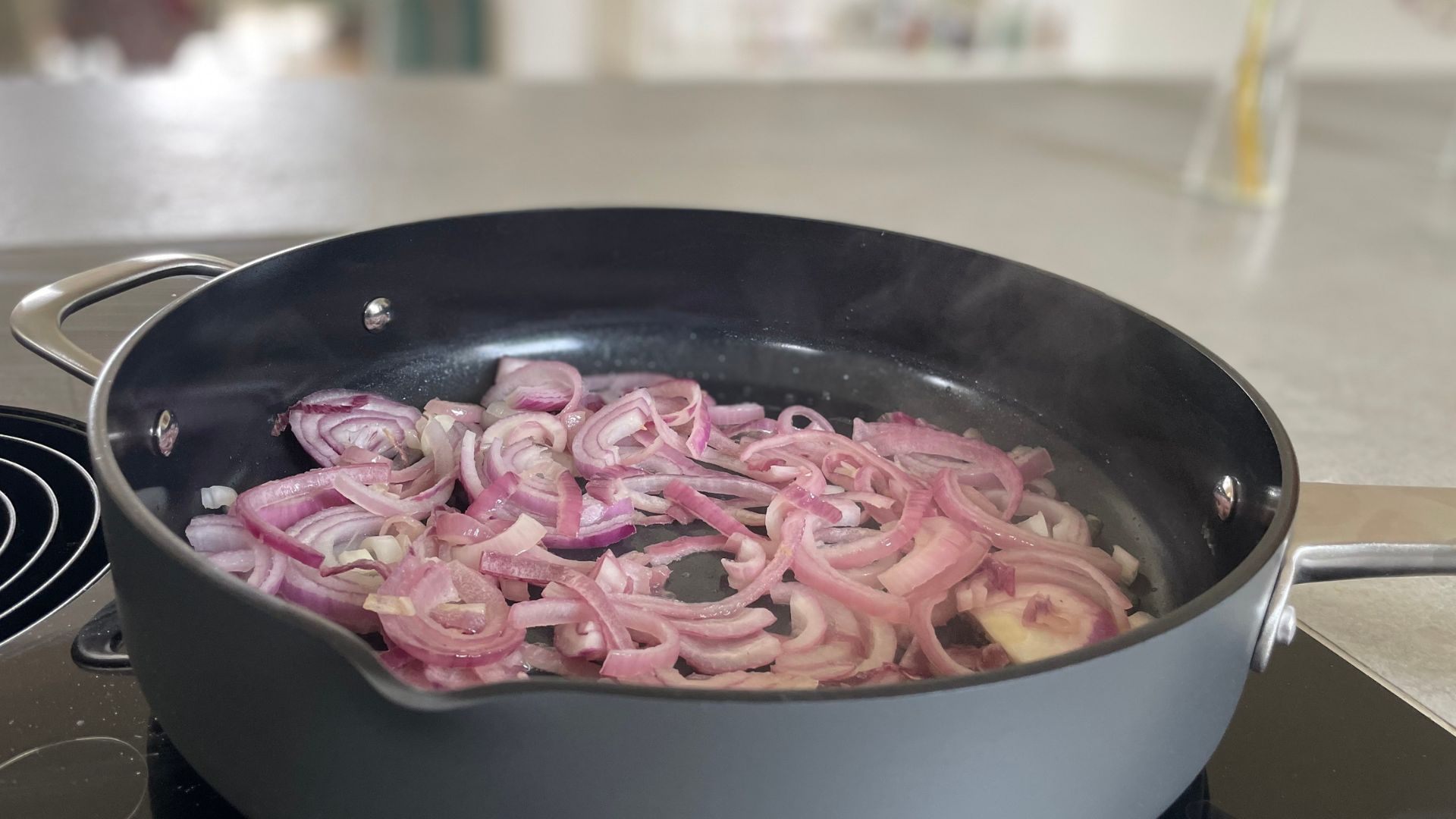
With this in mind, I moved on to frying onions. These need heat quickly and evenly. I used a drizzle of olive oil to ensure that each curl of onion crisped up in all the right places. Within four minutes, the onions were lovely and golden at the tips, but with tenderness in the middle. I ran a test where I sat the onions still, hoping they would burn on the high heat, but try as I might, I couldn’t get them to stick onto the pan. They really mean non-stick when they promise it.
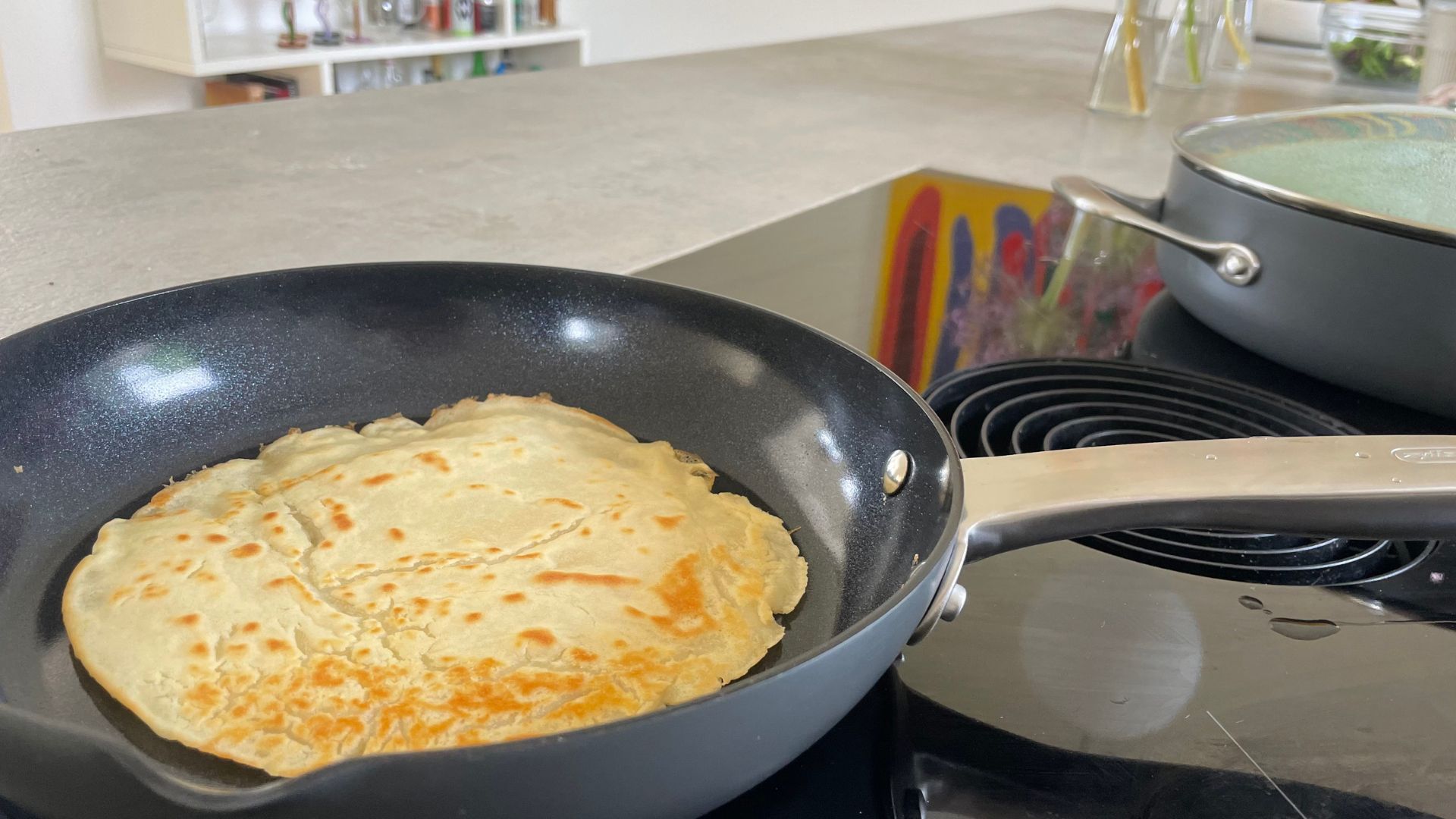
The next test was making pancakes, a test which I left for the frying pan only. Of all the pans I used that day — fifteen — this made the best pancake. I added a little butter to the base so that I could get some nice golden crunchiness on the edge of the pancake and watched it cook through perfectly. You can see that the colour across the whole pancake is a beautiful, even hue, yet more proof that the heat across the base of this pan is really consistent.
I wanted to check that these could do low and slow cooking too, so I melted chocolate into a sauce. You can see in the image that I got a really glossy mix. The chocolate didn't cease. Instead, it melted really smoothly and nicely. I loved it.

The next test was for the sauté pan: taking 1 litre of water to the boil. Thanks to the clear lid, the pan was all quick for its size (it took just over two minutes to boil the water) and I could watch the bubbles inside the pan without lifting the lid and letting all the steam out.
After the water, I made soup, boiled potatoes, cooked fruit, and made my way through a week’s worth of meal preparation really effortlessly. Even when full of potatoes, the pan was still comfortable to hold, the handles didn’t get too hot and they were a nice size relative to how heavy the pan would be when full.
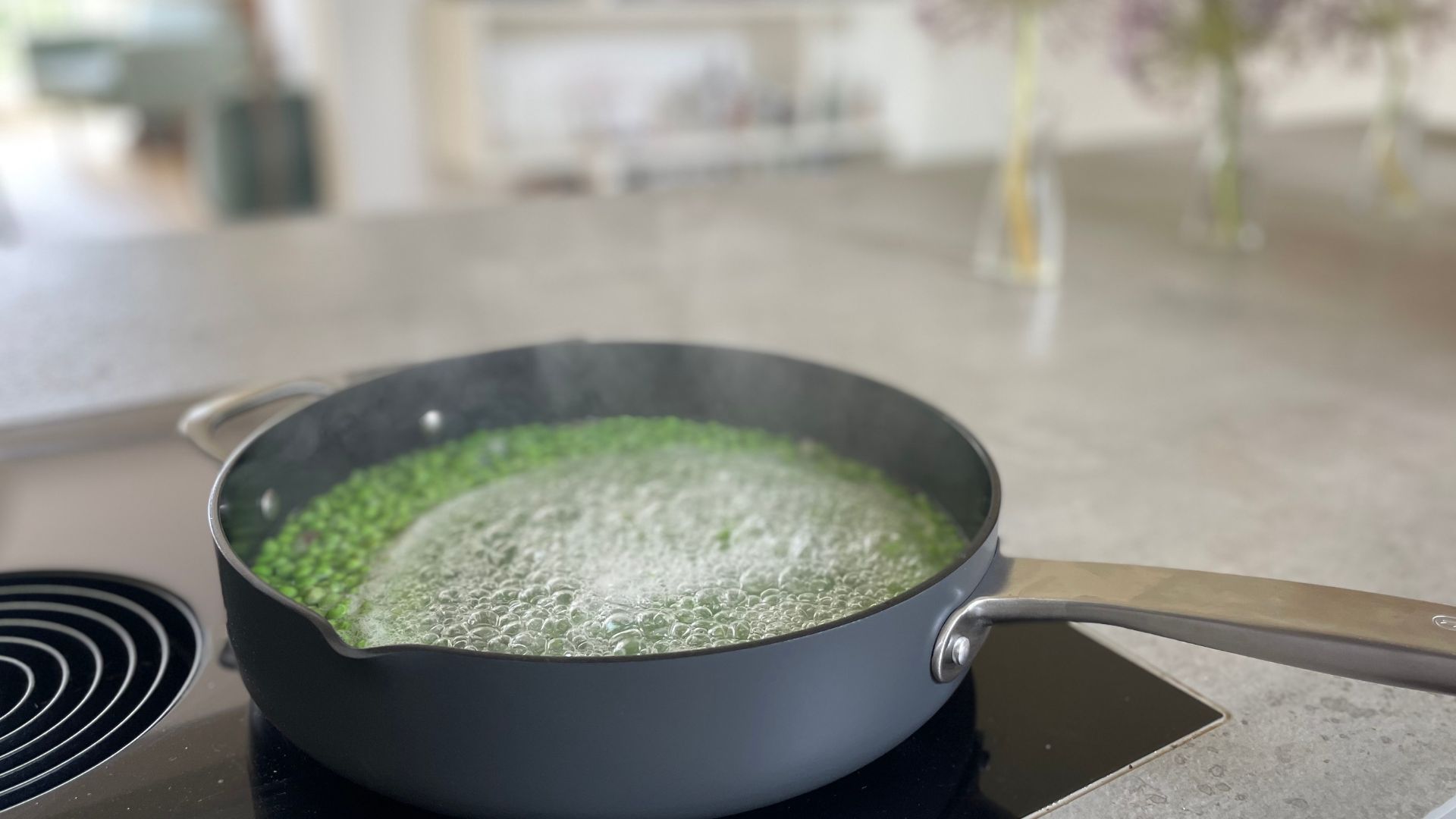
I actually used a stick blender with my soup, which I wouldn’t always do straight into a pan, but these non-sticks are tough, so I wanted to test them out. True to their promise, I didn’t scratch or damage the pans at all. In fact, once I washed them up, they were as good as new.
The soup recipe also made great use of the different sized draining holes in the lid of the pan, as well as the pouring spout. These are all little touches, but they make a big difference to the overall experience of using the pan.
Cleaning
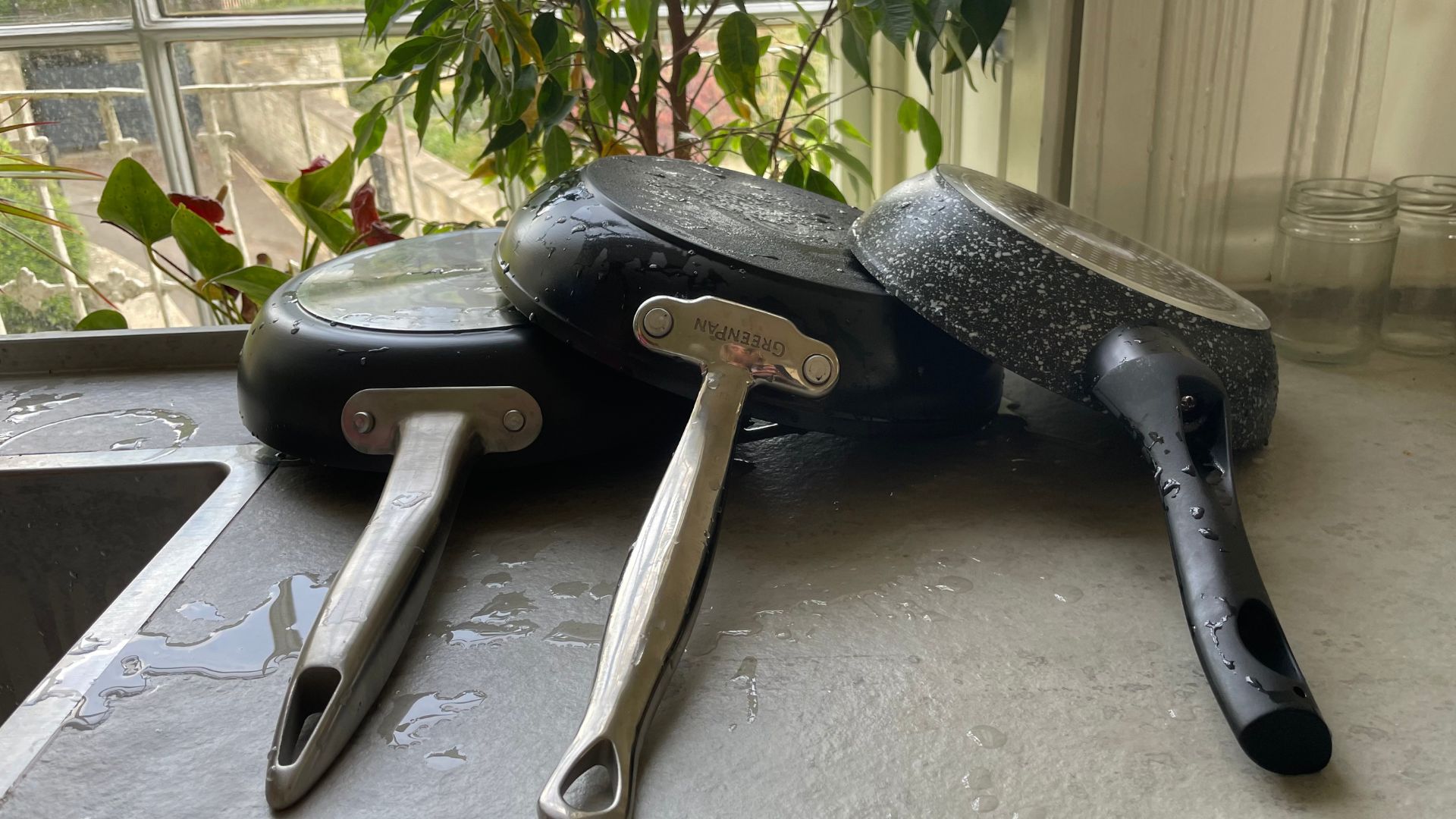
The cherry on top of this whole experience is that the pans can go in the dishwasher. I washed them up by hand — it’s just so easy thanks to the non stick. Even the glass lid of the sauté pan wipes clean really easily. Luckily, the pans stack neatly away too. It’s nice not to have to sweat about the less glamorous parts of the cooking process.
How does it compare?
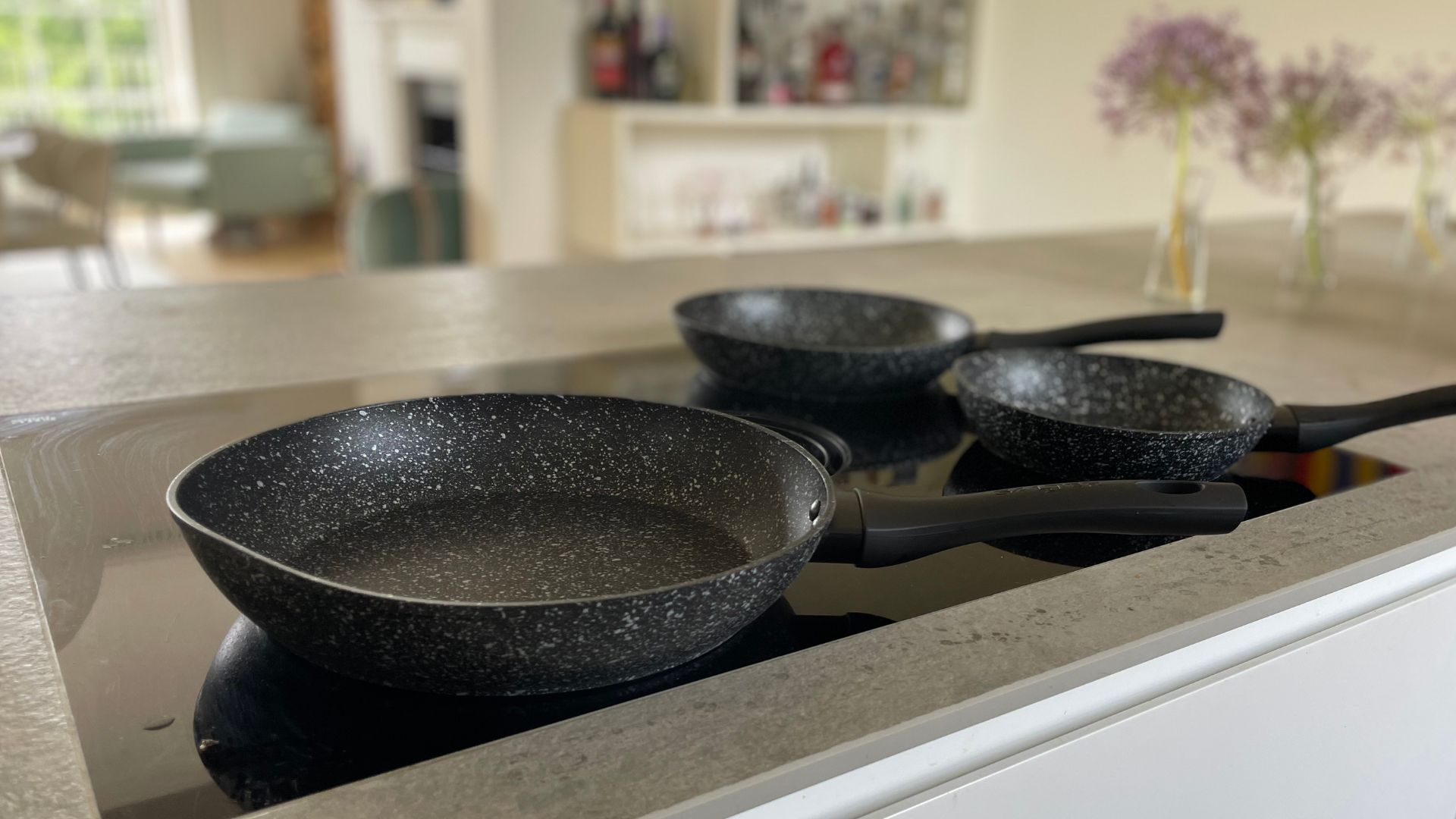
Zyliss’ pans are brilliant. I tested them alongside some other seriously impressive pans and the ones that stand out for a direct comparison is Salter’s Megastone Set. These have a robust non-stick that can also stand stainless steel utensils. They have a more textured finish, which might suit your kitchen better and they’re also a lot cheaper, so great if you’re shopping on a budget. The downside is that they aren’t dishwasher safe, so you have to wash them gently and by hand.
Should you buy it?
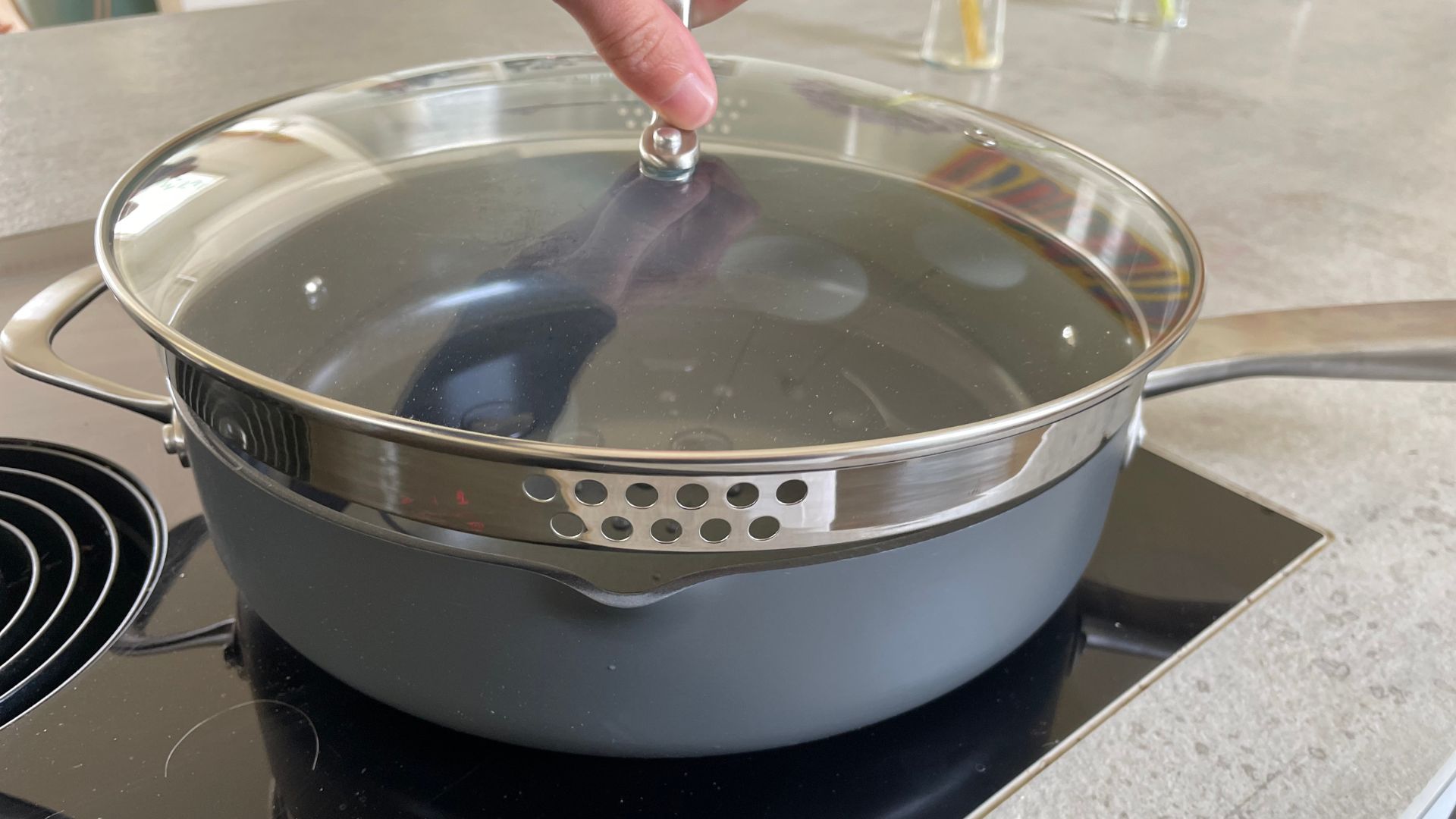
If you want to buy individual, top-quality pans, the Zyliss Ultimate Pro set are brilliant. They're well-priced and fall comfortably into the non-toxic category of cookware, which provides some nice relief for many cautious chefs. I loved having these in my kitchen and can't wait to see what comes next from Zyliss.
How we test

At woman&home how we test induction pans is a serious, rigorous process. Every review that you read follows a standardised set of tests, designed to tell us about the speed, versatility, quality, and usability of a pan. We make notes on everything from what it feels like to hold and what it's like to clean right through to how quickly it can boil water and what a pancake cooked in one of these looks like.
I like to think that this review gives you a holistic idea of what these pans are like to use, as well as who they suit, and whether they're good value for money. However, if you still have questions, don't hesitate to email me with your questions. If you want to look closer at the process, we also have a page dedicated to how we test induction pans too.







